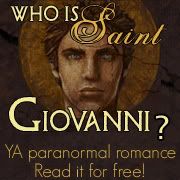 Author: Hilari Bell
Author: Hilari BellPublisher: Houghton Mifflin
Pub Date: 3 Jan 2011
Hardcover: 288 pages
Source: ARC (Thanks NetGalley!)
Summary: (Taken from Goodreads)
In the year 2098 America isn't so different from the USA of today. But, in a post-9/11 security-obssessed world, "secured" doesn't just refer to borders between countries, it also refer to borders between states. Teenagers still think they know everything, but there is no cure for cancer, as Kelsa knows first-hand from watching her father die.The night Kelsa buries her father, a boy appears. He claims magic is responsible for the health of Earth, but human damage disrupts its flow. The planet is dying.Kelsa has the powers to reverse the damage, but first she must accept that magic exists and see beyond her own pain in order to heal the planet.
Review:
I am loving all these mythological-based books now coming out and this one is no different. I love how Bell ties together all the different mythologies to incorporate it into the story she's made. It really works. The novel did have a few problems for me that I will go into later, but first let's talk about the good stuff.
Awesome thing #1: Subtlety. This is a futuristic world, but Bell doesn't make it so futuristic that I can't recognize it. Everything is similar but slightly off, which is exactly how I think the future will be. For example, there are hover vehicles, but regular vehicles still exist. People have "com pods" which I envision as some sort of really fancy iPhone. And some high school teachers seem to teach through computers, but it was still recognizably school. Some may argue that due to the rapid pace of technological advancements, it should have been more otherworldly, which I completely get; however, I really liked how I could recognize the old world in the new. Very well done.
Awesome thing #2: Native American mythology. I feel like this subject doesn't get written about a lot and it is SO interesting. Instead, many focus on Greek and Irish mythology (probably because that's what we mostly hear about in school). I liked the different flavor this mythology brought to the story, and I liked how it tied together with other mythologies. It especially works for the subject matter (healing the "leys," which are, essentially, a part of nature).
Awesome thing #3: It's a small thing, but I really liked how the evolution of the curse words was explained. I could totally see this happening in real life. Related to Awesome thing #1, it was similar enough that I recognized it, but just evolved enough to make it seem strange. Very cool.
Now for the problems.
Problem #1: Conflict. Using her "human magic" (as it's called) seemed to be really easy for Kelsa. And the incantations come rather easily to her. I know that the book says it takes her a little while to come up with the words, but I want to see the struggle. Especially since she's supposed to be conflicted about the existence of magic -- she is in denial, but then she just sits down and reaches out to the earth to heal it? Seems like a huge jump between mind frames. Conflict problems arose throughout the entire novel, I think. It was the biggest problem for me. I thought that things were fairly easy on Kelsa (until the end, of course), which I wasn't very happy with.
Problem #2: Development. Sometime between the beginning and middle of the novel, Kelsa got to become rather comfortable with Raven and his quirks. She would say things like "typical" when he did something, when I didn't find it typical at all. I really wished that there was more description of him and of the relationship they built so I could connect to him as well as Kelsa. This may have been a conscious choice on the part of the author since Raven is a spirit (or whatever you want to call him -- not human, anyway), and is therefore unrelatable. So I'm just going to list this as a personal preference.
However, I did think it was a good, fast read. I would recommend giving it a try.
My rating: 3
Until later!







